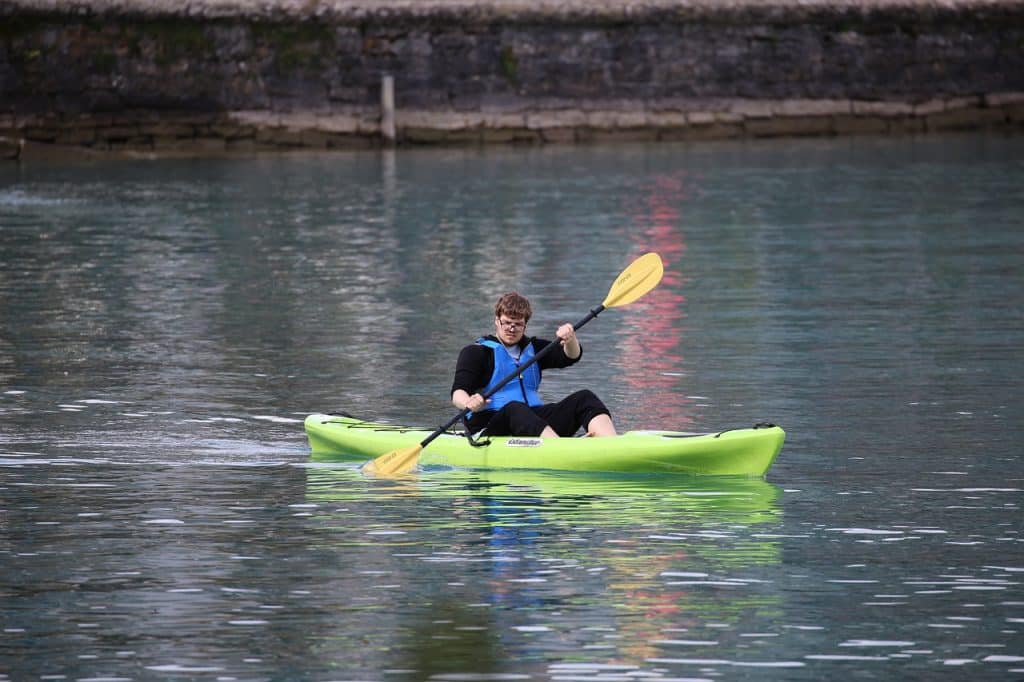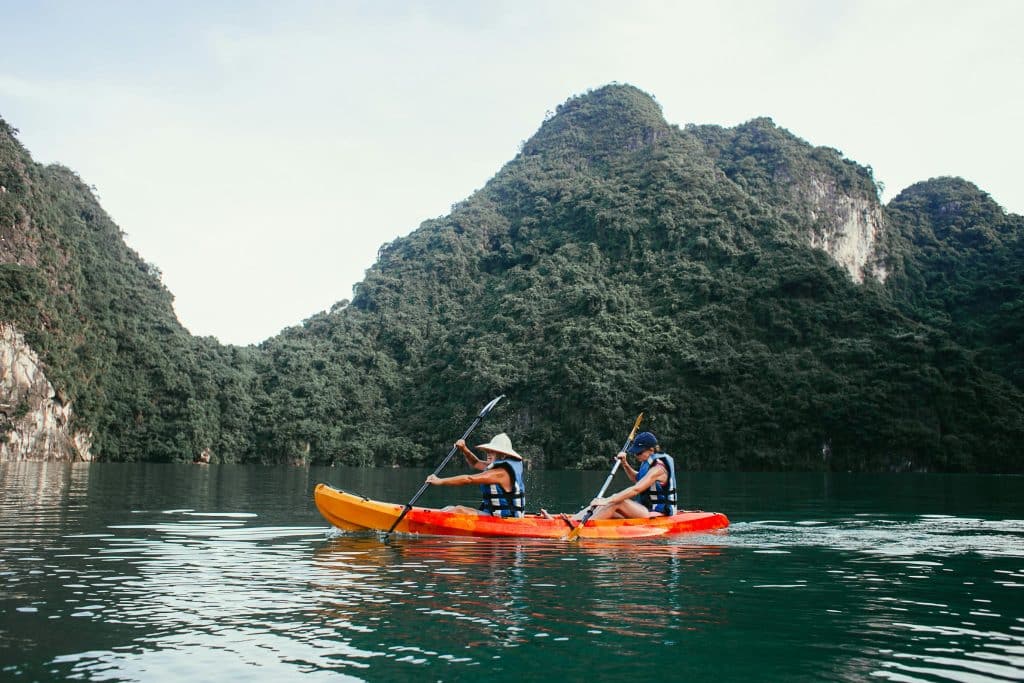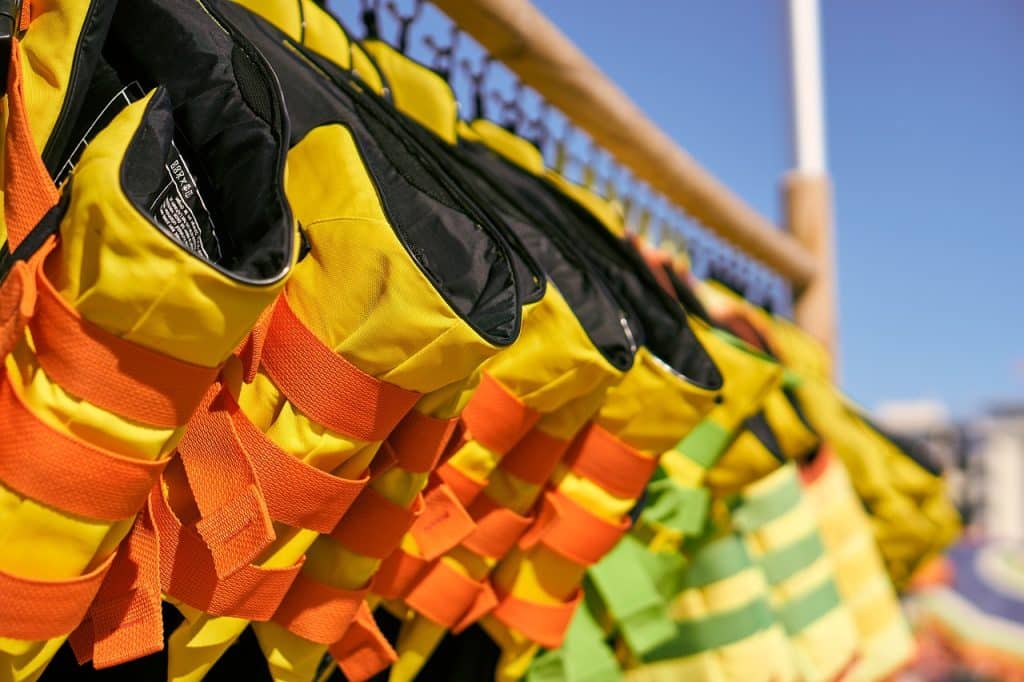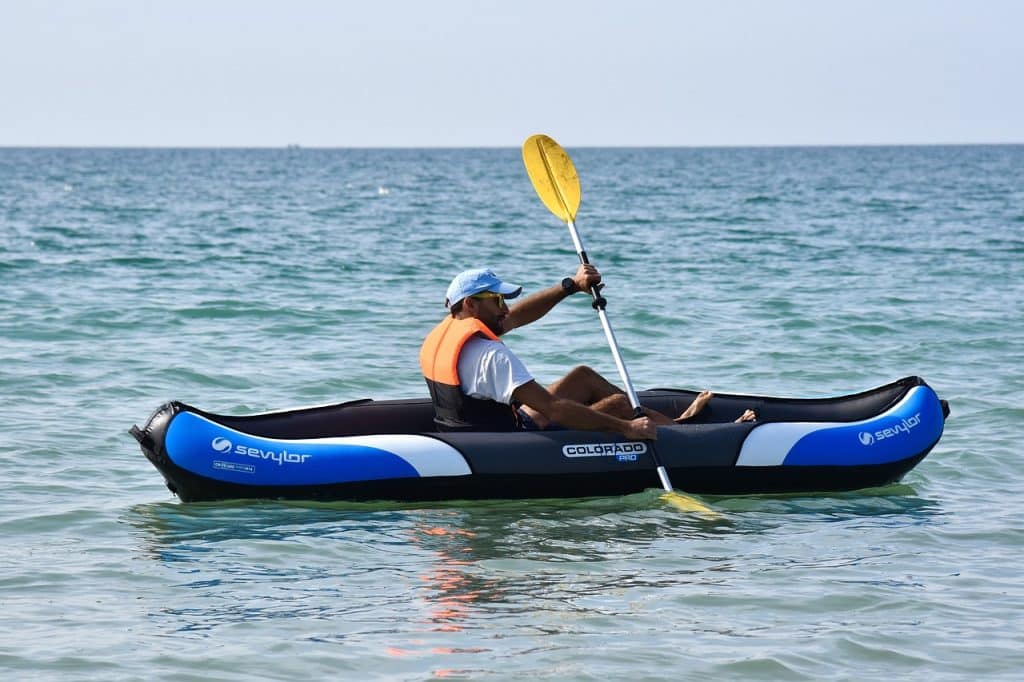Kayak101: Mastering the Waves

Welcome to the Kayaking for Beginners Report
Introduction: Building Confidence and Improving Physical Fitness
For individuals who love kayaking, embarking on the journey as a beginner can be both exciting and challenging. The primary goal of this report is to help beginners build confidence in their kayaking abilities while simultaneously improving their physical fitness. While these objectives are desirable, there are various complications that individuals may encounter along the way.
Confidence-building in kayaking for beginners may be hindered by a fear of water, lack of experience in maneuvering a kayak, or uncertainty about handling unforeseen situations. Similarly, improving physical fitness through kayaking may face obstacles such as muscle fatigue, inadequate strength, or lack of endurance. These complications can make the journey towards building confidence and enhancing physical fitness a daunting task for beginners.
By understanding the potential challenges and complications that may arise, individuals can better prepare themselves for the journey ahead. Through perseverance, dedication, and the right guidance, beginners can overcome these obstacles and progress towards mastering the art of kayaking while reaping the benefits of improved physical fitness.
Introduction to Kayaking Basics

First and foremost, familiarize yourself with the different types of kayaks available, such as sit-on-top kayaks, recreational kayaks, and sea kayaks. Each type has its own unique features and purposes, so choose one that aligns with your goals and comfort level.
Next, learn about the essential gear required for kayaking, including a paddle, personal flotation device (PFD), and appropriate clothing for the conditions. Safety should always be a top priority when heading out on the water.
Practice proper paddling techniques, including how to hold the paddle correctly and execute efficient strokes. This will not only improve your performance but also prevent fatigue and potential injury while kayaking.
Understanding basic navigation and water safety principles is crucial for a successful kayaking experience. Be aware of your surroundings, weather conditions, and potential hazards to ensure a safe and enjoyable trip.
Lastly, start slowly and gradually increase the intensity of your kayaking sessions to improve your physical fitness. Kayaking engages various muscle groups, including the arms, core, and back, providing a full-body workout that can help you stay fit and healthy.
Proper Paddling Techniques
Proper paddling techniques are essential for both enhancing your kayaking experience and improving your physical fitness. Here are some key tips to help you paddle effectively:
1. Grip: Hold the paddle with a relaxed grip, ensuring your hands are positioned shoulder-width apart. Keep your elbows slightly bent to avoid strain on your arms and shoulders.
2. Posture: Sit upright in your kayak with your back straight and shoulders relaxed. Engage your core muscles to maintain stability and balance as you paddle.
3. Stroke Technique: To propel your kayak forward, start the stroke near your feet and pull the paddle back alongside the kayak, keeping it close to the boat. Rotate your torso to engage your core muscles and maximize the power of each stroke.
4. Feathering: Adjust the angle of the paddle blades to minimize wind resistance and increase efficiency. Experiment with different feathering angles to find what works best for you.
5. Practice: Regularly practice your paddling techniques in calm waters before venturing into more challenging conditions. Focus on building muscle memory and refining your strokes to feel more confident on the water.
By mastering proper paddling techniques, you'll not only enhance your kayaking skills but also improve your physical fitness through a full-body workout. Remember to always prioritize safety and enjoy the journey of learning and growing as a kayaker.
Safety Guidelines and Equipment
Before hitting the water, it's crucial to ensure your safety and have the necessary equipment to enjoy kayaking to the fullest. Here are some essential safety guidelines and equipment tips to keep in mind:

2. Learn and Practice Self-Rescue Techniques: Take the time to learn self-rescue techniques such as how to re-enter your kayak from the water. Practice these techniques in a controlled environment before venturing out on more challenging waters.
3. Check the Weather Conditions: Before heading out, always check the weather forecast and be aware of any potential changes in conditions. Avoid kayaking in severe weather or high winds that can make paddling difficult and dangerous.
4. Bring Safety Gear: In addition to a PFD, carry essential safety gear such as a whistle, signaling mirror, and a first aid kit. These items can be invaluable in case of an emergency.
5. Know Your Limits: Start with calm waters and gradually increase the difficulty level as you gain more experience and confidence. Always paddle within your skill level to avoid accidents.
6. Stay Hydrated and Wear Sun Protection: Kayaking can be physically demanding, so remember to stay hydrated and protect yourself from the sun by wearing sunscreen, a hat, and sunglasses.
By following these safety guidelines and ensuring you have the right equipment, you'll not only build confidence in your kayaking skills but also improve your physical fitness through this enjoyable outdoor activity.
Building Strength and Endurance
One of the key aspects of kayaking is building strength and endurance. This is essential not only for improving your overall physical fitness but also for enhancing your performance on the water. Here are some tips to help you build strength and endurance for kayaking:
1. Core Exercises: Strengthening your core muscles is crucial for stability and power while kayaking. Include exercises like planks, Russian twists, and leg raises in your workout routine.
2. Cardiovascular Training: Improving your cardiovascular fitness will help you paddle longer and with more efficiency. Incorporate activities like running, cycling, or swimming to boost your endurance levels.
3. Upper Body Workouts: Kayaking primarily engages your upper body, so focus on building strength in your arms, shoulders, and back. Exercises such as pull-ups, push-ups, and shoulder presses can help strengthen these muscles. 
4. Paddling Drills: Practice paddling techniques regularly to not only improve your skills but also to build endurance in the specific muscles used for kayaking. Start with short paddling sessions and gradually increase the duration as your strength improves.
By consistently incorporating these strength and endurance-building activities into your routine, you will not only enhance your physical fitness but also gain the confidence needed to tackle more challenging kayaking adventures.
Practice and Progression
As you continue on your kayaking journey, consistent practice is key to building your confidence and improving your physical fitness. Here are some tips to help you practice effectively and progress in your skills:
1. Regular Practice: Make time in your schedule to kayak regularly, even if it's just for short sessions. The more you practice, the more comfortable you will become on the water.
2. Set Goals: Establish clear goals for your kayaking skills and fitness level. Whether it's mastering a new stroke or increasing your endurance, having goals will keep you motivated to push yourself.
3. Focus on Technique: Pay attention to your paddling technique and body positioning. Good technique not only improves your efficiency on the water but also helps prevent injuries.
4. Gradual Progression: Don't rush your progress. Start with basic skills and gradually build up to more advanced techniques. This gradual progression will help you avoid frustration and build a strong foundation.
5. Mix It Up: Keep your kayaking sessions interesting by trying out different routes, environments, and conditions. This variety will challenge you and improve your adaptability as a kayaker.
By dedicating time to practice and focusing on continual progression, you will steadily build your confidence and enhance your physical fitness through the exciting sport of kayaking.
Final Thoughts
As we conclude this guide on kayaking for beginners, it is essential to reflect on the primary goals of this adventurous water sport - building confidence and improving physical fitness. By mastering the basics of kayaking, you are not only enhancing your skills on the water but also boosting your self-assurance and overall well-being.
Remember, the journey to becoming a proficient kayaker may have its challenges, but with persistence and practice, you will steadily progress towards your objectives. Embrace each paddling session as an opportunity to learn, grow, and conquer new waters.
If you feel the need to revisit any sections of this report, don't hesitate to do so. Additionally, for those seeking further in-depth knowledge and hands-on training in kayaking for beginners, consider enrolling in an online course dedicated to this exciting sport. Further education and practical experience will undoubtedly elevate your skills and passion for kayaking.
Keep pushing your boundaries, stay committed to your goals, and most importantly, savor every moment spent on the water. May your kayaking adventures be filled with joy, fulfillment, and a deep connection to nature!
